New Publication from MHT Press
Canavest was the last permanent village of the Piscataway (Conoy) Indians in Maryland. Various aspects of the site are vividly described in a series of colonial documents from Maryland, Virginia, and Pennsylvania. In his new book, Dennis C. Curry pairs these archival records with an analysis of archaeological remains to provide a glimpse of Piscataway life in the late 17th and early 18th centuries. This book will be roughly 175 pages and will cost $22.95. Reserve your copy!
|
|
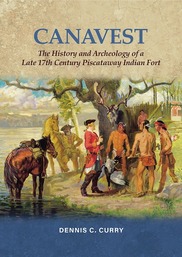 |

Susquehanna River Rail Bridge Project
The Susquehanna River Rail Bridge (c.1906) is a two-track bridge located in the City of Havre de Grace (Harford County) and the Town of Perryville (Cecil County). The project will replace the bridge with new structures to maintain future rail services across the Susquehanna River. As part of this effort, Amtrak is working with MHT's review and compliance team to identify and study cultural resources (for example, significant historic buildings or archaeological sites) within the project area, so that they are taken into account during the design and construction process. All of the documentation collected will be preserved in the U.S. Department of the Interior's permanent archives.
|
By Barbara Fisher, Capital Grants and Loans Administrator
The Maryland Historical Trust is excited to announce the FY23 Historic Preservation Capital Grants Program awardees!
Listed on the National Register of Historic Places, Lloyd Street Synagogue (Baltimore City) is a Greek Revival style building constructed in 1845. It features a unique round stained-glass window with a Star of David, thought to be the first on any exterior in the United States. In 1963, it became the Jewish Historical Society of Maryland. This $100,000 project will address urgent structural and ceiling repairs.
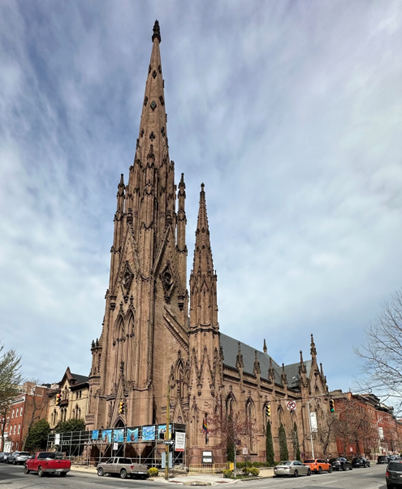 |
Built in 1854-1859, the First and Franklin Presbyterian Church (Baltimore City) is listed on the National Register of Historic Places for its high-style Gothic Revival architecture, with the spires added in 1873. Beyond its architectural significance, the church and congregation have also played a significant role in LGBTQ+ history, hosting the first AIDS Support Group outside of a clinical environment and the first public forum on the burgeoning AIDS crisis that drew more than 300 people. The $100,000 grant project’s priority is restoring the tallest brown stone spire, including an engineering assessment.
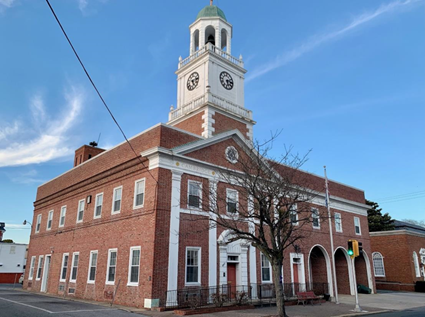 |
The Cambridge Municipal Building (Dorchester County) is a 1926 Colonial Revival government building designed by Henry Powell Hopkins, and is noted for its role in the summer of 1963 civil unrest in Cambridge. City officials based in the building sought the National Guard’s assistance during ongoing protests, leading to the longest peacetime occupation of a community in U.S. history. The $100,000 grant project will restore the wood cupola and clock tower, front doors, trim, and decorative details, enabling the building to be used once again as government offices, in addition to a first-floor public gathering space and museum.
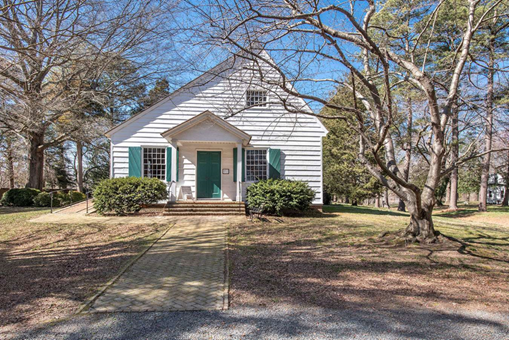 |
One of the Atlantic seaboard’s three oldest surviving religious facilities, Third Haven Meeting House (Talbot County) (c. 1684) represents the origins and values associated with religious freedom. Despite some Quaker members being slaveholders, Third Haven is known for its influence on Maryland Quakers' emancipation efforts in the tobacco economy in the late 18th century. The $100,000 grant project aims to restore wood elements of the meetinghouse like siding and windowsills and improving moisture issues in the crawl space and interior through passive, noninvasive ventilation.
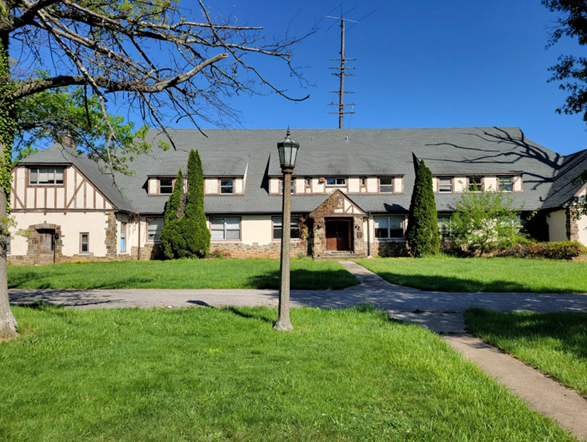 |
The Edwards Building (Baltimore County) sits on the 14-acre campus of the Pikesville Armory, the second oldest Armory in Maryland. Listed on the National Register of Historic Places, it was a training base for US soldiers who played critical roles in World Wars I and II. Built in the 1920s as the Officer’s Headquarters, the WWI-era Edwards Building sits prominently on the campus and is a lovely example of Tudor-style architecture. The $100,000 grant project will focus on the waterproofing needs and masonry repairs on the foundation.
 |
In 1924, the Prince George’s Volunteer Fireman’s Association commenced the construction of the town’s first firehouse. The Cottage City and Colmar Manor Fire Department (Prince George's County) building served as the firehouse for the port towns of Cottage City and Colmar Manor until 1940 when it was replaced by a larger firehouse. Recently, the town of Cottage City purchased the building to serve as a Community Outreach Center. The $100,000 grant project will focus on rehabbing original material, such as interior wood floors, trim, molding, and paneling, and masonry, a terra cotta seal, roof, and wood windows and doors.
 |
Dating to 1862, the National Register-listed Wye Mill (Queen Anne's County) is the oldest water-powered overshoot grist mill in continuous operation in the country. The mill is an excellent example of milling technology from the 17th century through the 20th century. In 1952, the opening of the Chesapeake Bay Bridge threatened its existence, but the Friends of Wye Mill, Inc. purchased the property to ensure the mill would continue operating as part of a museum. The $4,000 grant will focus on repairs to the mill race box and sluice gate.

E-Submissions for Tax Credit Application
Federal tax credit applications must now be submitted electronically. Please contact MHT tax credit staff at mht.taxcredits@maryland.gov to get started. Updated applications for homeowner and small commercial programs, as well as instructions for how to submit an electronic application are forthcoming.
|
Architectural Fieldwork Symposium
Save the date! MHT’s Architectural Fieldwork Symposium will move from its usual October timeslot to March 28, 2024. We look forward to seeing our fellow field surveyors, architectural historians, preservation planners, and related practitioners for a day to connect, network, and hear about the latest initiatives throughout the state. Watch for a call for presentation abstracts this fall and registration in February 2024.
|
|
 |

Reach Out!
There are many ways you can learn more about MHT, its programs, and the work it does. The latest news is updated regularly on our website. You can "like" and "follow" us on Facebook and Instagram, or sign up for our e-blasts to have our quarterly newsletters and other preservation news delivered straight to your inbox! If you are interested in joining the team at MHT, check the most recent job listings.
Our website is currently under construction, and will be switching to a new format soon. This might mean links you currently have will no longer work.
|

|